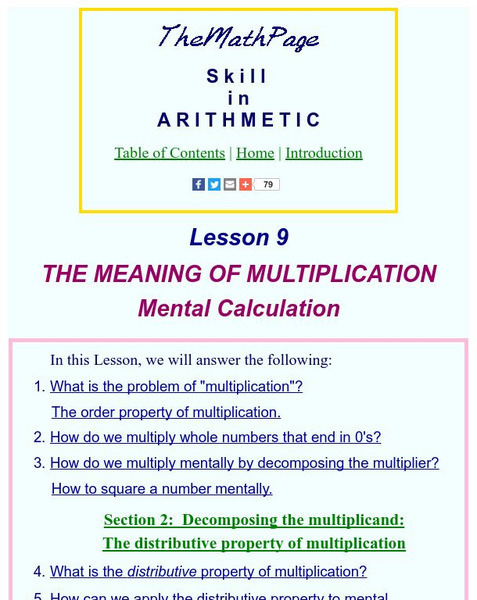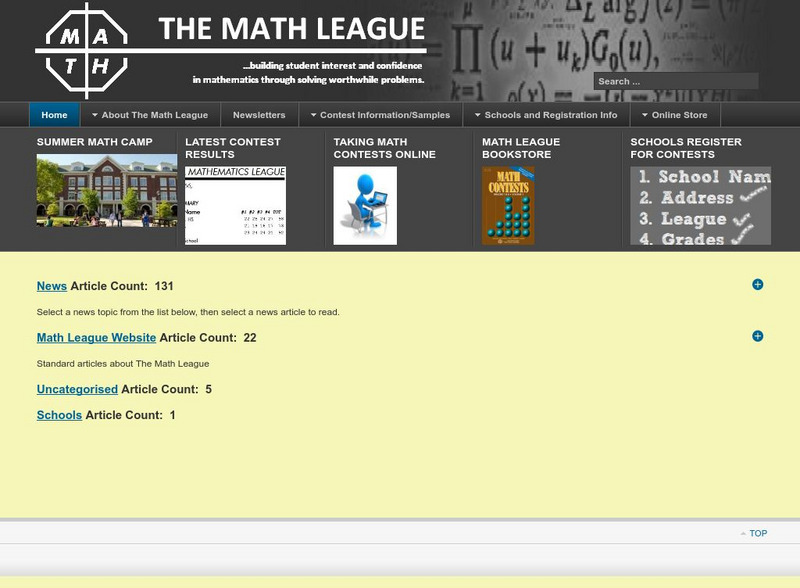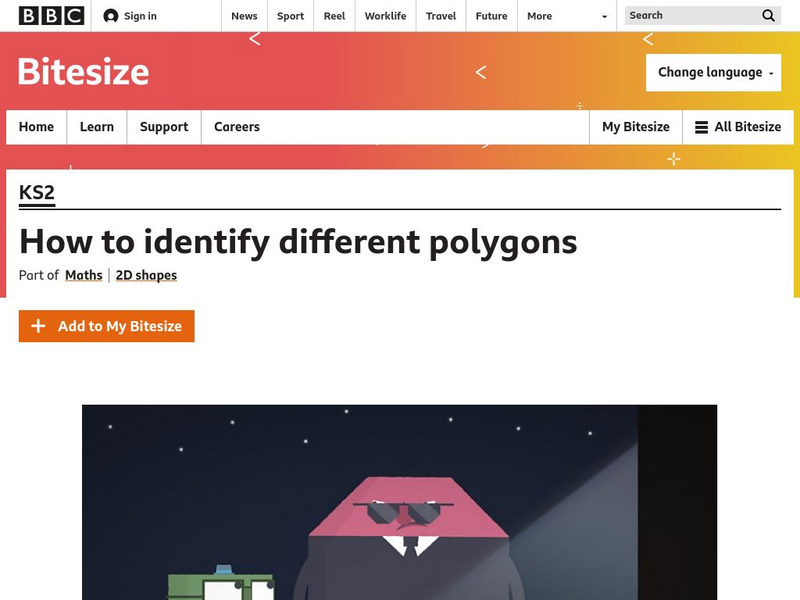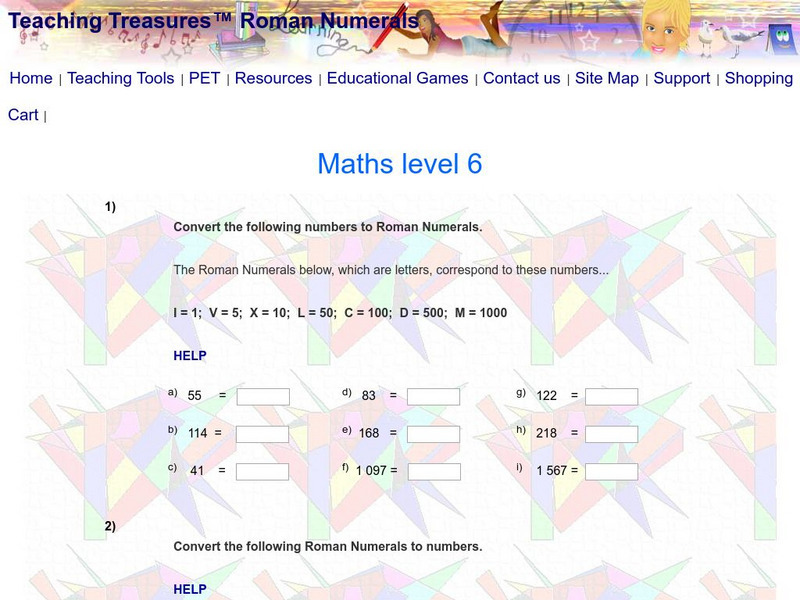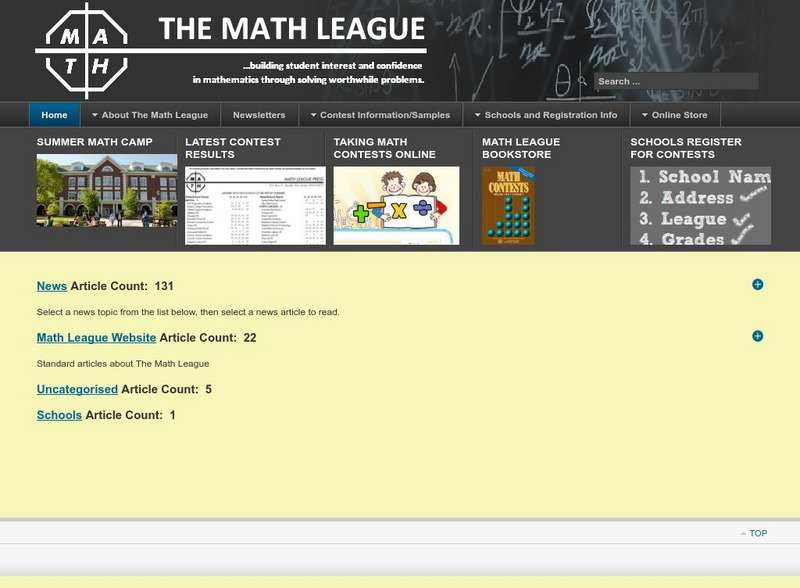Khan Academy
Khan Academy: Powers of Products and Quotients
Rewrite powers of products and quotients. Students receive immediate feedback and have the opportunity to try questions repeatedly and to watch a video or get hints.
Khan Academy
Khan Academy: Powers of Powers
Rewrite powers of powers into equivalent expressions. Students receive immediate feedback and have the opportunity to try questions repeatedly, watch a video, or get hints.
Other
Ask Lois Terms: Distributive Property
So, you don't know what the distributive property is. Never fear, just ask Lois! She knows all about the "Properties." Find this definition and others in this site were kids can email questions about math and get answers. Math terms...
Lawrence Hall of Science
The Math Page: Skill in Arithmetic: The Meaning of Multiplication: Mental Calculation
If you are looking for a website that explains and defines the basics of mental multiplication with helpful hints then you have arrived at an excellent resource. There are even practice problems at the very end of the lesson.
Math Is Fun
Math Is Fun: Properties of Regular Polygons
Find a definition of regular polygon, and learn how to calculate the internal angle, external angle, and number of diagonals of a regular polygon. Also, learn how to find the area of regular polygons.
PBS
Pbs: Simplifying the Sum of Two Algebraic Expressions
Simplify expressions with rational numbers using the distributive property of multiplication. This student-generated video focuses on using the distributive property to create equivalent expressions when multiplying by negative numbers...
AAA Math
Aaa Math: Addition Properties
Learn the definitions and study examples of the four properties of addition. Then try the game to check your understanding of each of the properties. The game will tell you when your answers are correct. If you answer incorrectly, it...
The Math League
The Math League: Whole Numbers & Basic Properties
Here is a nice resource for students and teachers about whole numbers and their basic properties. It provides links to information on place value, expanded form, and rounding numbers are just a few of the topics on this page.
Other
Nearpod: Solving Equations: The Distributive Property
In this activity on solving equations with the distributive property, 8th graders will learn how to solve equations by combining like terms after using the distributive property.
BBC
Bbc: Bitesize: Maths: 2 D Shapes
Learn about the properties of 2-D shapes: circles, triangles, polygons, and quadrilaterals. Includes information, video, and examples about each, with games and quizzes for reinforcement.
Math Open Reference
Math Open Reference: Parallelogram: (Coordinate Geometry)
Students are able to manipulate a parallelogram on a coordinate grid to explore properties of a parallelogram and then calculate the distance of the sides, altitude, and area. The resource also includes links to further explain important...
Math Open Reference
Math Open Reference: Volume of a Pyramid
Use this interactive tool to find the volume of a pyramid. Try different figures for the height and the base to see how these affect the volume. Properties of pyramids are explained, how to calculate the volume using a formula, what an...
Math Open Reference
Math Open Reference: Surface Area of a Pyramid
Use this interactive tool to find the surface area of a pyramid. Try different figures for the height and the base to see how these affect the area. Properties of a pyramid are discussed, how to use a formula to calculate the surface...
Math Is Fun
Math Is Fun: Spinning Square Pyramid
Students learn about the properties of a square-based pyramid and the formulas for surface area and volume. The learning resource consists of facts and an interactive spinning square pyramid. Includes several multiple-choice questions.
Math Open Reference
Math Open Reference: Surface Area of a Right Prism
Use this interactive tool to find the surface area of a right prism. Try different figures for the height and the dimensions of the prism to see how these affect the surface area. Properties of right prisms are explained, how to use a...
Illustrative Mathematics
Illustrative Mathematics: 6.ee Equivalent Expressions
In this problem, we have to transform expressions using the distributive, commutative and associative properties to decide which expressions are equivalent. Common mistakes are addressed, such as not distributing the 2 correctly. Aligns...
Math Is Fun
Math Is Fun: Polygons
This is an excellent outline of the terms used to describe polygons as well as the definitions of the different types.
Math Planet
Math Planet: Multiplying Polynomials and Binomials
Gain an understanding of how to multiply polynomials and binomials by viewing an example and a video lesson.
National Council of Teachers of Mathematics
The Math Forum: Ask Dr. Math: Distributive Property Illustrated
This is part of a math forum at Drexel University. A student gets frustrated when asked to solve a problem using the distributive property. Never fear. Dr. Math to the rescue! Illustrations and detailed examples help provide...
PBS
Pbs: Equivalent Expressions With the Distributive Property
This animated Math Shorts video explains how the distributive property can help students model and create equivalent expressions. In the accompanying classroom activity, students play a quick game where they identify common factors...
Teaching Treasures Publications
Teaching Treasures: Year Six Math (Page 2)
This interactive worksheet covers a wide range of math concepts such as Roman Numerals, distributive property, estimating sums, and comparing fractions and decimals. Some concepts may be slightly challenging. Learners can access the help...
University of Cambridge
University of Cambridge: Nrich: Where Are They?
Test your logic, polygon properties, and pattern recognition skills working on this challenge. Solution included.
The Math League
The Math League: Obtuse Triangle
This site gives the definition of obtuse triangles.
ClassFlow
Class Flow: Mental Math
[Free Registration/Login Required] After this lesson, students will be able to solve problems using a variety of mental math strategies.



